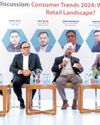The DDPP 2018 aims to spawn a home-grown weapons industry by 2025, but where is the ecosystem?

INDIA RANKS FOURTH in an index that tracks global military power in terms of available firepower, armed forces personnel and diversity of weapons available. The criteria used in the rankings to determine military strength include natural resources, local industry, geographical features and available manpower. Incidentally, India is also the largest arms importer, accounting for close to 15 per cent of the global arms trade.
As a matter of fact, India’s arms imports shot up by 24 per cent between 2013 and 2017, going by statistics of the think-tank, Stockholm International Peace Research Institute. Domestic production of military hardware is at present confined to a cluster of nine defence public sector undertakings (DPSUs) and 39 ordnance factories, controlled by the Union Ministry for Defence, which together account for less than 40 per cent of the military hardware supplies of the Indian Armed Forces.
The Draft Defence Production Policy (DDPP) 2018 strives to change the scenario. It aims to make the world’s fourth largest military power self-reliant in defence production as well. The DDPP attempts to create a policy environment to lure private sector players and global arms manufacturers to set up production bases for military equipment on Indian soil.
The draft policy identifies 13 sets of weapons systems, including fighter jets, helicopters, warships, missile systems, ammunition and explosives, land systems and electronics that could be developed and manufactured in India by 2025.
Should the DDPP targets fructify, domestic production and sales of military equipment would be worth $26 billion by 2025, of which a fifth or $5 billion, would be for the export market. The DDPP also aims to make India a global leader in Artificial Intelligence and cyberspace technologies. In short, it strives for indigenisation of 75 per cent of defence production in half a decade, which provokes the poser: is it feasible?
Esta historia es de la edición August 18, 2018 de Businessworld.
Comience su prueba gratuita de Magzter GOLD de 7 días para acceder a miles de historias premium seleccionadas y a más de 9,000 revistas y periódicos.
Ya eres suscriptor ? Conectar
Esta historia es de la edición August 18, 2018 de Businessworld.
Comience su prueba gratuita de Magzter GOLD de 7 días para acceder a miles de historias premium seleccionadas y a más de 9,000 revistas y periódicos.
Ya eres suscriptor? Conectar

Technology, AI Driving Warehousing Sustainability
Anshul Singhal on how Welspun One is rapidly transforming Grade-A logistics and industrial parks across India, offering integrated fund development and asset management for large-scale warehousing solutions

DECODING RETAIL'S NEXT FRONTIER
As brands pivot towards omnichannel ecosystems and startups challenge legacy frameworks, the focus sharpens on experiential retail, sustainability and data-driven personalisation.

SORORITY OF WOMEN OF METTLE
Awinter afternoon in mid-December found quite a crowd at the Oxford Book Store on Connaught Place, as bibliophiles congregated at a corner to listen to three women authors, diverse in their passions, but drawn together by an urge to tell their story.

THE LEGACY OF THE AMARNATHS
IN NOVEMBER 2017 the management committee of the Delhi Cricket Association named the eastern stand of the Feroze Shah Kotla ground the Mohinder Amarnath stand.

PUTTING THE POWER IN THE POWERHOUSE
The Asus ExpertBook P5 is powered by an 8-core 8-thread Intel Core Ultra 7 Series 2 processor that clocks a maximum speed of 4.8 GHz, but it does not have hyperthreading. It is light weight, with a smooth glass touch pad. The laptop almost has all the I/O ports you could possibly need in a business laptop, making it an extremely lucrative option for professional computing, says

"We must be aware of our energy and water consumption"
BW Businessworld caught up with actor, philanthropist, and climate warrior BHUMI PEDNEKAR to chat about climate change and more.

"Cooking is a passport to the world"
In conversation with renowned CHEF MANJIT GILL, Advisor at Kikkoman India and President, Indian Federation of Culinary Associations (IFCA). As the former Corporate Chef of ITC hotels, Chef Gill has helped shape iconic restaurants, such as the Bukhara, Dum Pukht, and Dakshin. He has had the privilege of serving former American Presidents Barack Obama, Bill Clinton, George Bush, and the French, Canadian, British and German premiers. In 1992, Chef Gill had the opportunity of being invited to cook for Prince Charles and Lady Diana, at the Palace of the Maharaja of Jaipur. He was awarded the Lifetime Achievement Award from the Ministry of Tourism in 2007.

Strengthening Middle Management for Organisational Resilience
WHAT HOLDS AN organisation together in chaos? Is it visionary leadership, cuttingedge strategies, or robust technology?

The Retail Trailblazers
A look at companies that are making a positive impact on India's growing retail sector with their future fit business and marketing strategies.

Driving Conscious Consumerism
VIDIT JAIN, Co-founder of Kindlife, is leading the charge in revolutionising the intersection of technology and conscious consumerism.